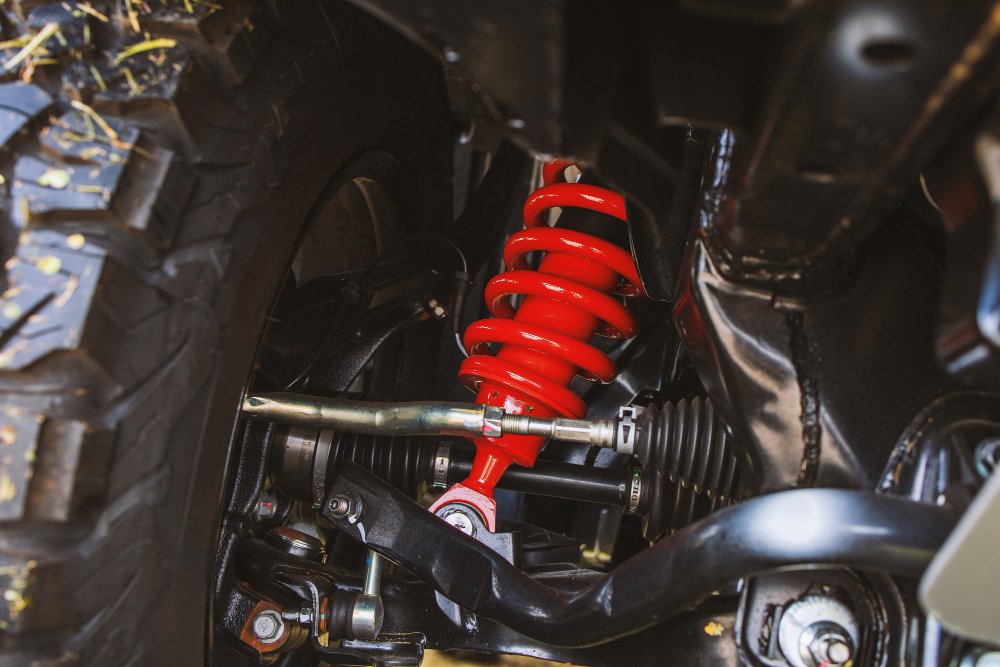
aman / Date: 19 Aug, 2025
Suspension and steering systems in your vehicle are among the most important parts as far as safe driving is concerned. They offer stability, handling and comfort such that your ride is smooth on rough roads. When you neglect wear and tear on these systems, costly repairs are a possibility and even more important, your safety is at stake. In this article, we are going to discuss typical signs that your steering or suspension system may require your immediate attention.
It is worth noting what these systems are used to do before plunging into the warning signs:
The two systems actually collaborate to allow driving to be controlled, comfortable, and safe. A failure of either may result in hazardous conditions, such as the loss of control, unbalanced tire wear, and low brake performance.
Weird noise Radiating: among the earliest indications of a suspension or steering issue is that of unusual sounds, including:
Why It Matters: The act of not paying attention to these noises can lead to a small problem evolving into serious repair. The cost of diagnosis, as well as stressful experience, can be saved with early identification.
The tires are the only component on your car that touches the road. Skewed tires are usually an indicator of suspension or steering problems.
Why It Matters: Not only uneven oversized tires slacken traction, they also may drag down fuel consumption and cause vibration when on the road.
When your car veers off on driving with a flat and straight road then this is an indication of either the malfunction of the suspension or steering.
Why It Matters: Not taking this symptom seriously, one may face an increased chance of accidents, especially, on the highways or on the wet road.
It can be seen clearly that your suspension is working good when you have a smooth ride. There is a bouncing issue: when your car begins to bounce too much on bumps or is unstable When you take a turn this could be a sign that:
How to Check: depress the hood or trunk of your car. Bouncing is bounce over two times before the car settles may indicate that your shock absorbers or struts require replacement.
The Impact: Bad suspension hurts more than just your comfort; it can make the stopping distance longer in emergency situations and cause you to less in control of your car.
Vibrations in the steering wheel, especially while accelerating or braking, are a sign of possible suspension or steering issues.
Why It Matters: Vibrations can affect steering precision and increase driver fatigue, reducing overall safety.
If your steering becomes harder than usual or feels “loose,” it could indicate a problem.
Why It Matters: Steering difficulties directly impact vehicle control, making it critical to address this issue immediately.
Leaking fluid is a clear indicator that something in your suspension or steering system is failing.
Why It Matters: Fluid leaks reduce system efficiency and can cause complete failure if left untreated.
During braking, your car should maintain balance. If the front end dives excessively, or the rear sags when accelerating, it’s a clear sign that your suspension is compromised.
Why It Matters: This not only affects comfort but can also compromise braking efficiency and stability.
Excessive free play in the steering wheel is another symptom of suspension or steering issues.
Why It Matters: Delayed response in steering increases accident risk and reduces handling precision.
In order to increase the life of your suspension and steering system:
The vehicle safety, comfort, and control rely on your suspension and steering systems. Signs of trouble that are not tended to could cost more money in repairs and unsafe operating conditions. Being in tune with abnormal sounds, rattles, oiltank spills, asymmetry in tires, and difficulty controlling the vehicle can help you keep your car safe and sound.
General care and well-maintained repairs not only increase the life expectancy of your car, but also the life of the people in it and others along the road. Note that safe driving begins with a car that has high sensitivity to your steering and stability in all weather conditions.